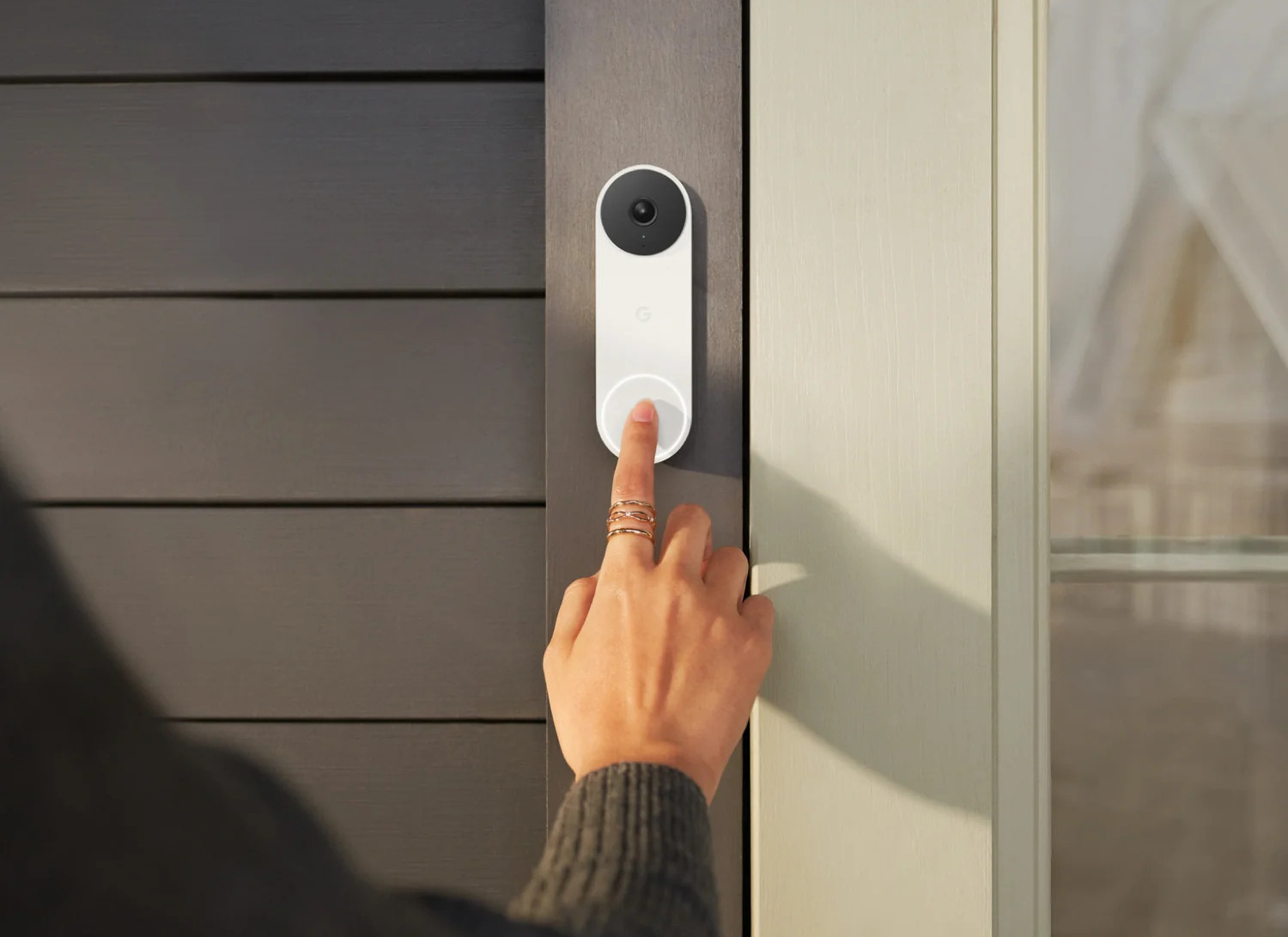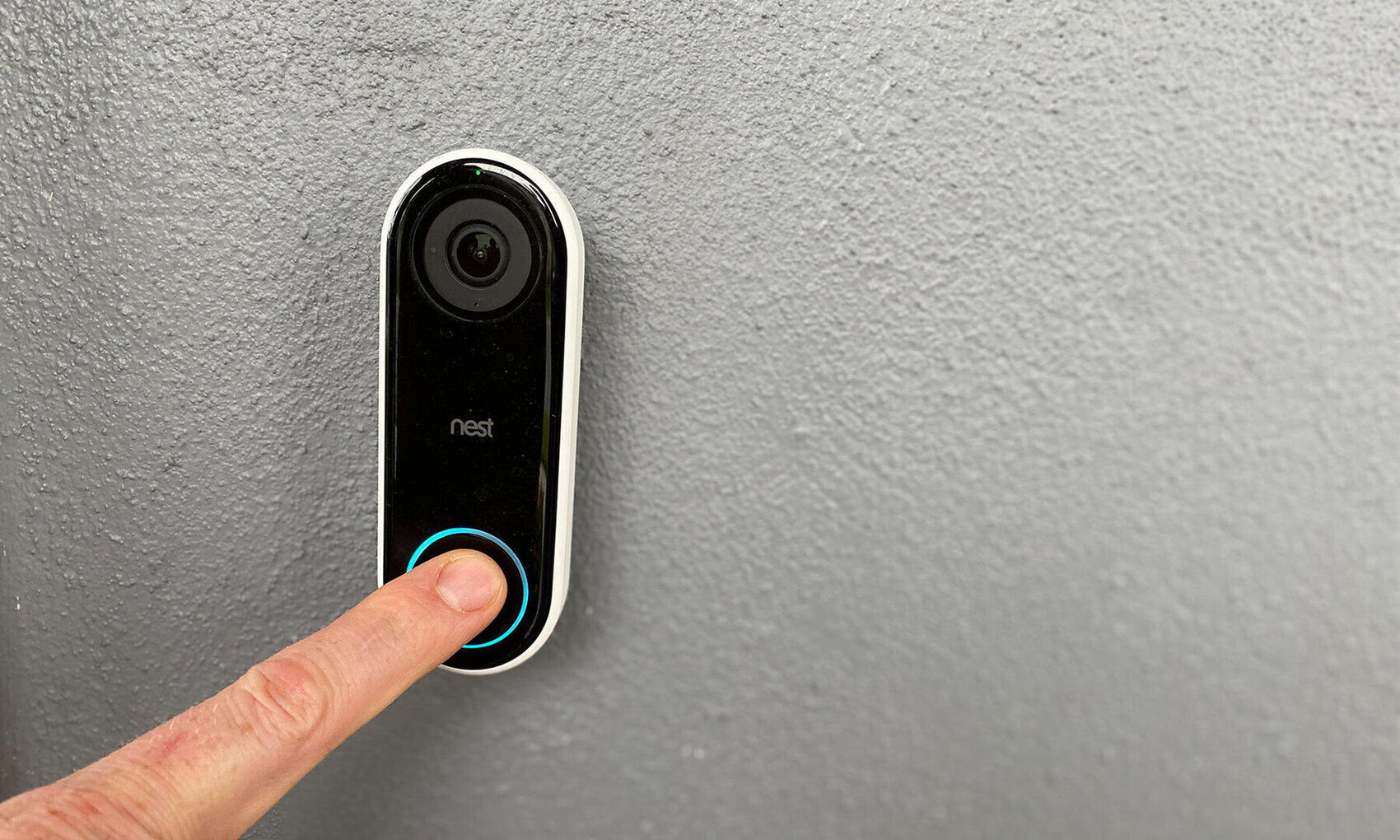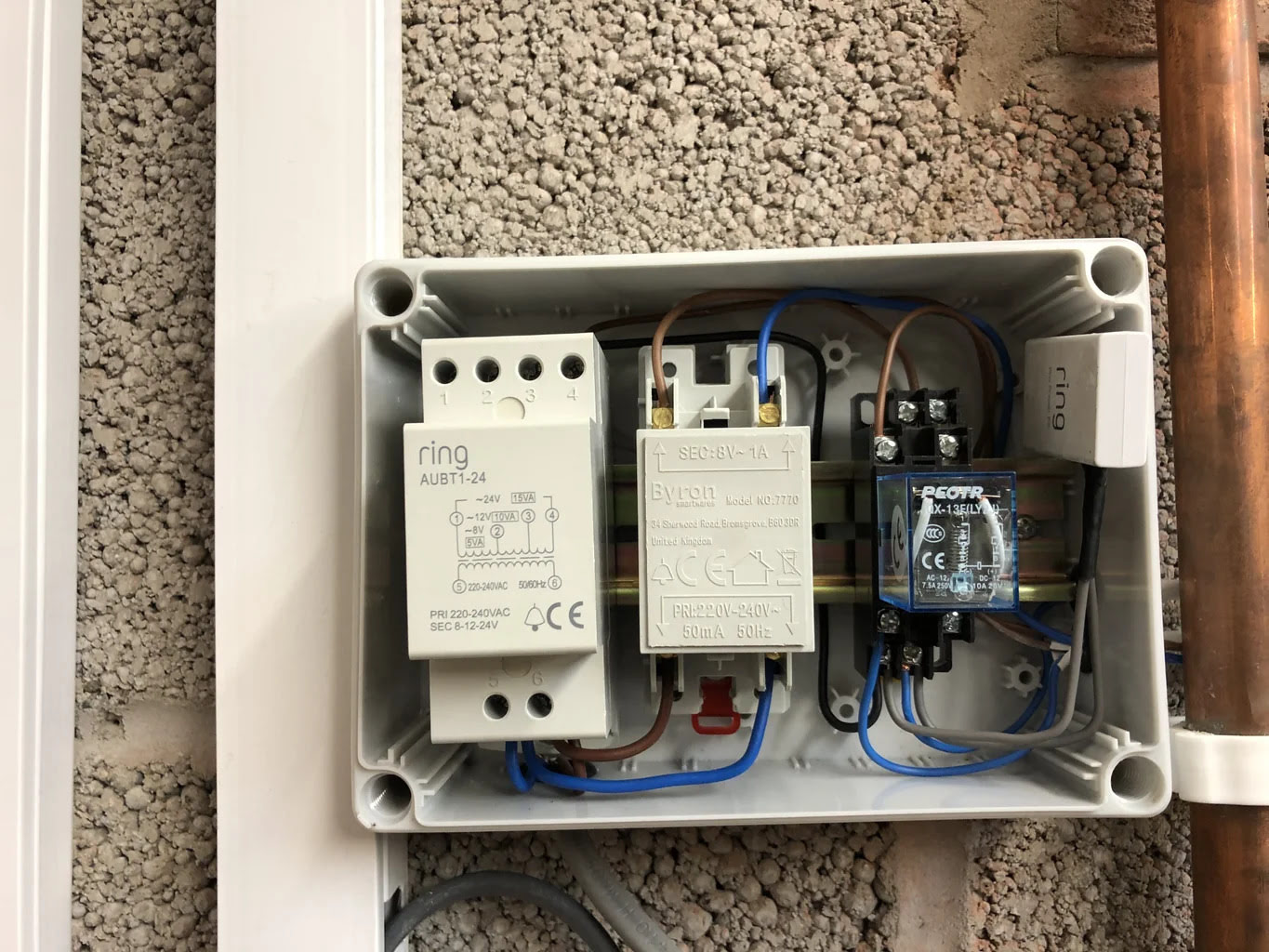

Articles
How Does A Doorbell Work
Modified: January 22, 2024
Discover how doorbells work with this informative article. Learn about the mechanisms behind this essential home device and how it alerts you to visitors at the door.
(Many of the links in this article redirect to a specific reviewed product. Your purchase of these products through affiliate links helps to generate commission for Storables.com, at no extra cost. Learn more)
Introduction
A doorbell is a common feature in most households and serves as a means of announcing the arrival of guests or visitors at the entrance. It provides a convenient way for people to notify those inside that they are at the door, without having to knock or yell. While we often take it for granted, the doorbell is actually a complex mechanism that involves several components working together to produce the familiar sound.
In this article, we will explore how a doorbell works, examining the different components involved and the process through which it operates. We will also touch upon some popular variations of doorbells that have emerged in recent years, transforming the way we interact with our doorways.
Key Takeaways:
- The doorbell is a sophisticated yet often overlooked device, comprising a button, transformer, and chime that work in harmony to alert us to visitors. Its evolution into wireless, video, and smart variations has revolutionized home security and convenience.
- Understanding the inner workings of a doorbell, from the button press to the chime activation, unveils the intricate process behind this seemingly simple device. Its ability to adapt to modern needs reflects the ever-evolving nature of technology.
Read more: How Does The Ring Doorbell Work
Components of a Doorbell
Before delving into the inner workings of a doorbell, it’s essential to understand the various components that make up this simple yet effective device:
- Doorbell Button: Located on the outside of the door, the doorbell button is the part that visitors press to signal their presence. It is typically made of durable materials such as metal or plastic and is designed to withstand frequent use and exposure to the elements.
- Transformer: The transformer is the power source for the doorbell system. It is usually mounted near the electrical panel of the house and converts the standard household voltage (120 volts in North America) into a lower voltage (typically 12 or 24 volts) that is safe for the doorbell’s electrical components.
- Doorbell Chime: The doorbell chime is responsible for emitting the audible sound when the doorbell button is pressed. It is commonly located inside the house, near the main entrance. The chime can come in various forms, such as a traditional mechanical chime with metal tone bars or a digital chime that produces different melodies or sounds.
Key Takeaways:
- The doorbell is a sophisticated yet often overlooked device, comprising a button, transformer, and chime that work in harmony to alert us to visitors. Its evolution into wireless, video, and smart variations has revolutionized home security and convenience.
- Understanding the inner workings of a doorbell, from the button press to the chime activation, unveils the intricate process behind this seemingly simple device. Its ability to adapt to modern needs reflects the ever-evolving nature of technology.
Read more: How Does The Ring Doorbell Work
Components of a Doorbell
A doorbell is a simple yet effective device that consists of several components working together to create the familiar sound that alerts us to the presence of someone at the door. Let’s take a closer look at the main components of a doorbell:
Doorbell Button
The doorbell button is the part of the doorbell system that visitors press when they want to signal their arrival. Usually installed outside the main entrance, the doorbell button can be made of various materials such as metal or plastic, designed to withstand daily use and exposure to the elements. When the button is pressed, it completes an electrical circuit, initiating the doorbell system’s activation process.
Transformer
The transformer is a crucial component of the doorbell system and serves as the power source. It is typically located near the electrical panel of the house and converts the standard household voltage (usually 120 volts in North America) into a lower voltage (typically 12 or 24 volts) that is safe for the doorbell’s electrical components.
The transformer’s role is to reduce the voltage to a level that won’t harm or interfere with the doorbell’s circuitry. This lower voltage is then distributed throughout the doorbell system, ensuring safe and efficient operation.
Read more: How Does Blink Doorbell Work
Doorbell Chime
The doorbell chime is responsible for producing the audible sound or tone when the doorbell button is pressed. It is typically located inside the house, near the main entrance or in a central area where the sound can be easily heard throughout the home.
When the doorbell button is pressed, it triggers a signal that is sent to the doorbell chime. The chime then produces a sound, alerting occupants that there is someone at the door. Doorbell chimes can come in different forms, such as traditional mechanical chimes with metal tone bars or modern digital chimes that can produce a variety of melodies or even customized sounds.
The doorbell chime is an essential component as it not only serves its practical purpose of alerting us to visitors but also adds a decorative touch to the interior of the home.
With the doorbell button, transformer, and chime working together, the doorbell system is able to function smoothly and efficiently, providing a reliable and convenient means of announcing the arrival of guests or visitors.
How Does a Doorbell Work?
A doorbell may seem like a simple device, but behind its button lies a fascinating mechanism that enables it to fulfill its purpose. Let’s explore how a doorbell works step by step:
Pressing the Doorbell Button
When a visitor arrives at the door, they press the doorbell button. This action completes an electrical circuit, initiating the doorbell system’s activation process. The button acts as a switch, allowing electricity to flow through the system.
Sending a Signal to the Transformer
The completed circuit sends an electrical signal to the transformer, which is usually located near the electrical panel of the house. The transformer is designed to convert the standard household voltage (typically 120 volts in North America) into a lower voltage, usually 12 or 24 volts, that is safe for the doorbell system.
Read more: Why Does My Doorbell Not Work
Transformer’s Conversion of Voltage
Once the signal reaches the transformer, it undergoes a voltage conversion. The transformer reduces the higher household voltage to a lower voltage level, ensuring the doorbell system operates safely and efficiently. This lower voltage is then distributed throughout the doorbell system.
Transmission of Signal to the Doorbell Chime
The transformed signal is then transmitted to the doorbell chime, which is typically located inside the house, near the main entrance. The doorbell chime is designed to receive the signal from the transformer and produce an audible sound or tone.
Activation of the Doorbell Chime
Upon receiving the signal, the doorbell chime activates and emits the familiar sound that alerts occupants to the presence of someone at the door. The sound generated can vary depending on the type of chime, whether it’s a traditional mechanical chime with metal tone bars or a digital chime capable of producing a wide range of melodies or sounds.
Once the doorbell chime is activated, it continues to emit the sound for a predetermined period of time, signaling the presence of a visitor until the electrical circuit is broken by releasing the doorbell button.
In summary, a doorbell is a relatively simple yet ingenious device that operates through the interaction of various components. From the initial press of the doorbell button to the transmission of the signal to the transformer, and finally the activation of the doorbell chime, each step seamlessly contributes to the overall functioning of the doorbell system.
Common Variations of Doorbells
While traditional doorbells have served us well for many years, advancements in technology have led to the development of innovative variations that enhance the functionality and convenience of our doorbell systems. Let’s explore some popular variations:
Read more: How Does Ring Doorbell Camera Work
Wireless Doorbells
Wireless doorbells have gained popularity due to their easy installation and flexibility. Unlike traditional wired doorbells, wireless models do not require any complex wiring. Instead, they operate using radio frequency signals to transfer the signal from the doorbell button to the chime receiver.
Wireless doorbells come with a range of options, including different chime sounds, adjustable volume settings, and even the ability to connect multiple receivers to cover a larger area. Some wireless doorbells also offer additional features, such as motion sensors or visual indicators, to provide an extra layer of security.
Video Doorbells
Video doorbells revolutionize the way we interact with our doorways by incorporating a built-in camera and communication capabilities. These doorbells allow homeowners to see and speak to visitors remotely via a smartphone or tablet app, even when they are not at home.
Video doorbells provide a heightened level of security by enabling real-time video monitoring of the front door. They often come equipped with motion sensors, night vision, and two-way audio communication, allowing homeowners to communicate with visitors and deter potential intruders.
Smart Doorbells
Smart doorbells combine the features of wireless and video doorbells with additional smart home integration capabilities. These doorbells can be connected to a home’s Wi-Fi network, allowing homeowners to receive notifications and access advanced features through a smartphone app or voice-activated virtual assistants like Amazon Alexa or Google Assistant.
Smart doorbells offer features such as remote access, live video streaming, and the ability to customize motion detection zones. Some models even provide facial recognition technology to identify familiar faces and send personalized notifications.
Furthermore, smart doorbells can integrate with other smart home devices, such as door locks or security systems, allowing for seamless automation and control of multiple aspects of home security.
With wireless, video, and smart doorbells, homeowners have a range of options to choose from, tailoring their doorbell system to meet their specific needs and preferences. These variations have transformed the way we interact with our doorways, providing added convenience, security, and peace of mind.
Conclusion
A doorbell may appear to be a simple device, but it is indeed a remarkable mechanism that serves as an essential component of our homes. From the moment a visitor presses the doorbell button to the activation of the doorbell chime, a series of processes take place to alert us to their presence.
Understanding the components of a doorbell, such as the doorbell button, transformer, and doorbell chime, provides insight into how these devices work in harmony to create the familiar sound we associate with someone at the door. The doorbell button initiates the circuit, sending a signal to the transformer, which converts the voltage to a safe and usable level. This signal is then transmitted to the doorbell chime, resulting in the activation of the audible sound that alerts us to the presence of a visitor.
Over the years, doorbells have evolved, giving rise to various variations that cater to different needs and preferences. Wireless doorbells offer flexibility in installation, while video doorbells provide an added level of security and convenience by allowing homeowners to see and communicate with visitors remotely. Smart doorbells take it a step further by integrating with smart home devices for enhanced automation and control.
Regardless of the type of doorbell you choose, the purpose remains the same – to provide a reliable and convenient means of alerting us to visitors at our door. Doorbells play a significant role in enhancing the security, convenience, and overall experience of our homes.
Next time you hear the doorbell ring, take a moment to appreciate the technology and ingenuity behind this seemingly simple device. It is a testament to human innovation and a reminder of the ever-evolving nature of the world around us.
Frequently Asked Questions about How Does A Doorbell Work
Was this page helpful?
At Storables.com, we guarantee accurate and reliable information. Our content, validated by Expert Board Contributors, is crafted following stringent Editorial Policies. We're committed to providing you with well-researched, expert-backed insights for all your informational needs.













0 thoughts on “How Does A Doorbell Work”